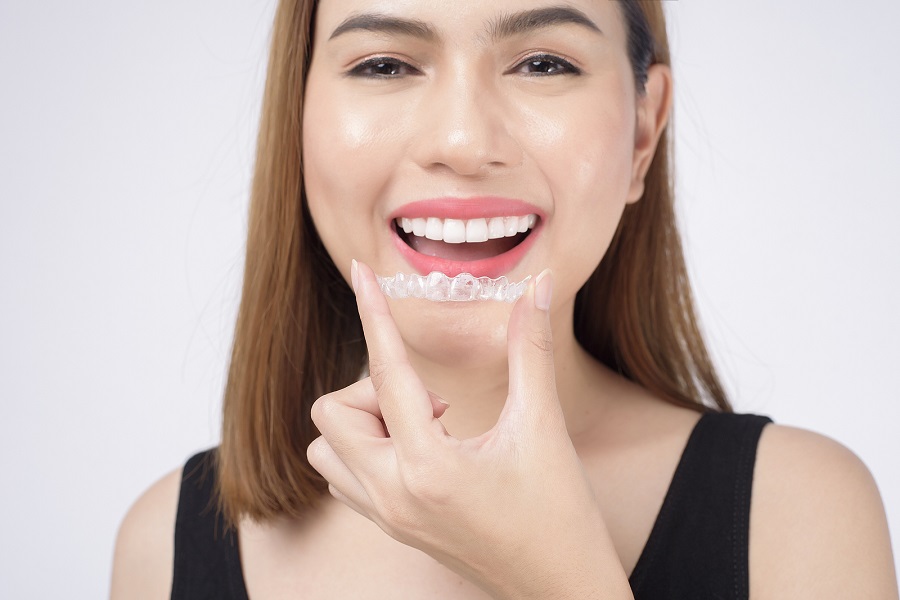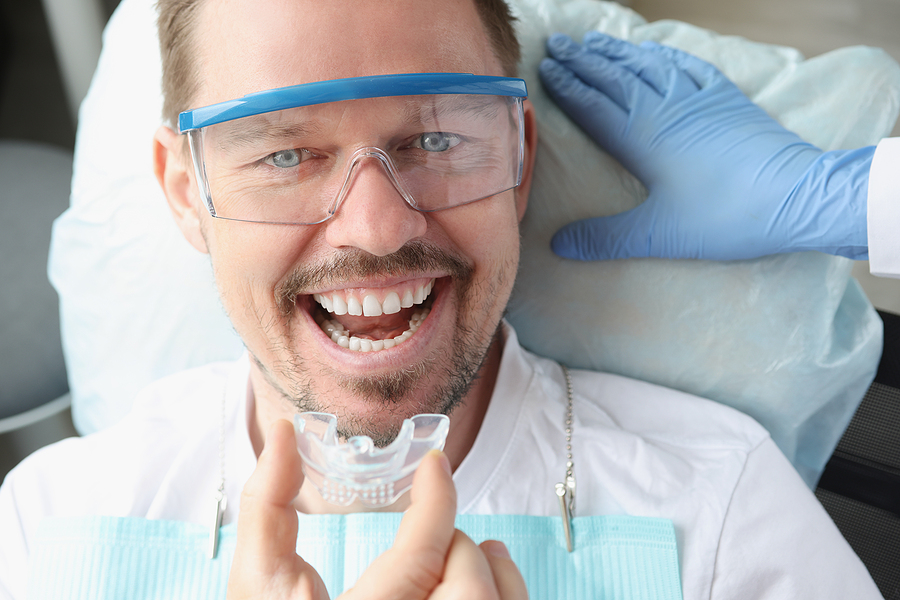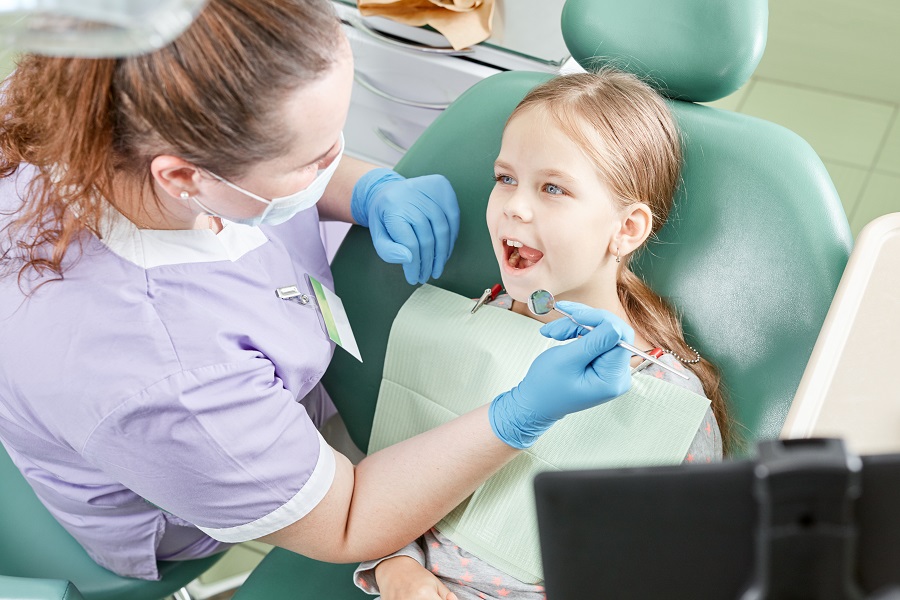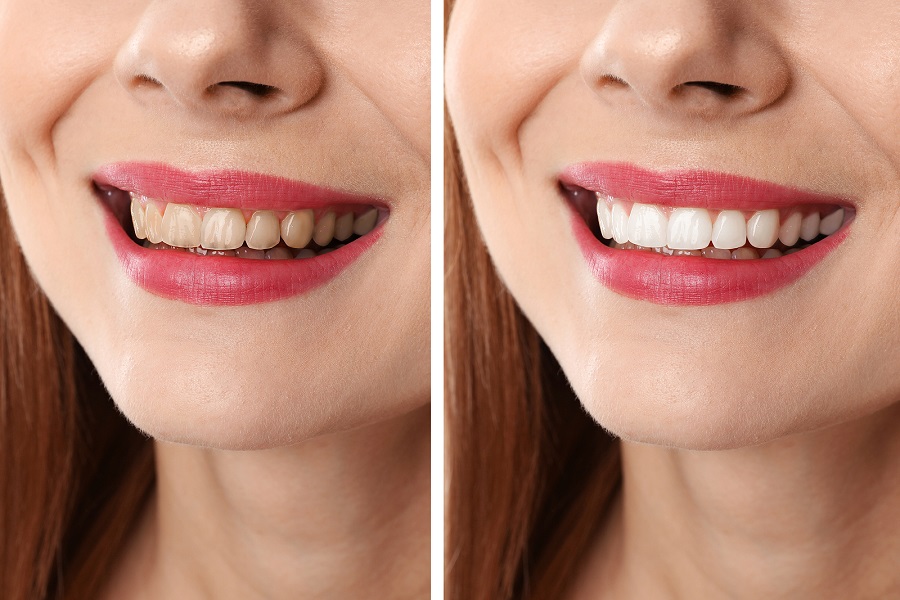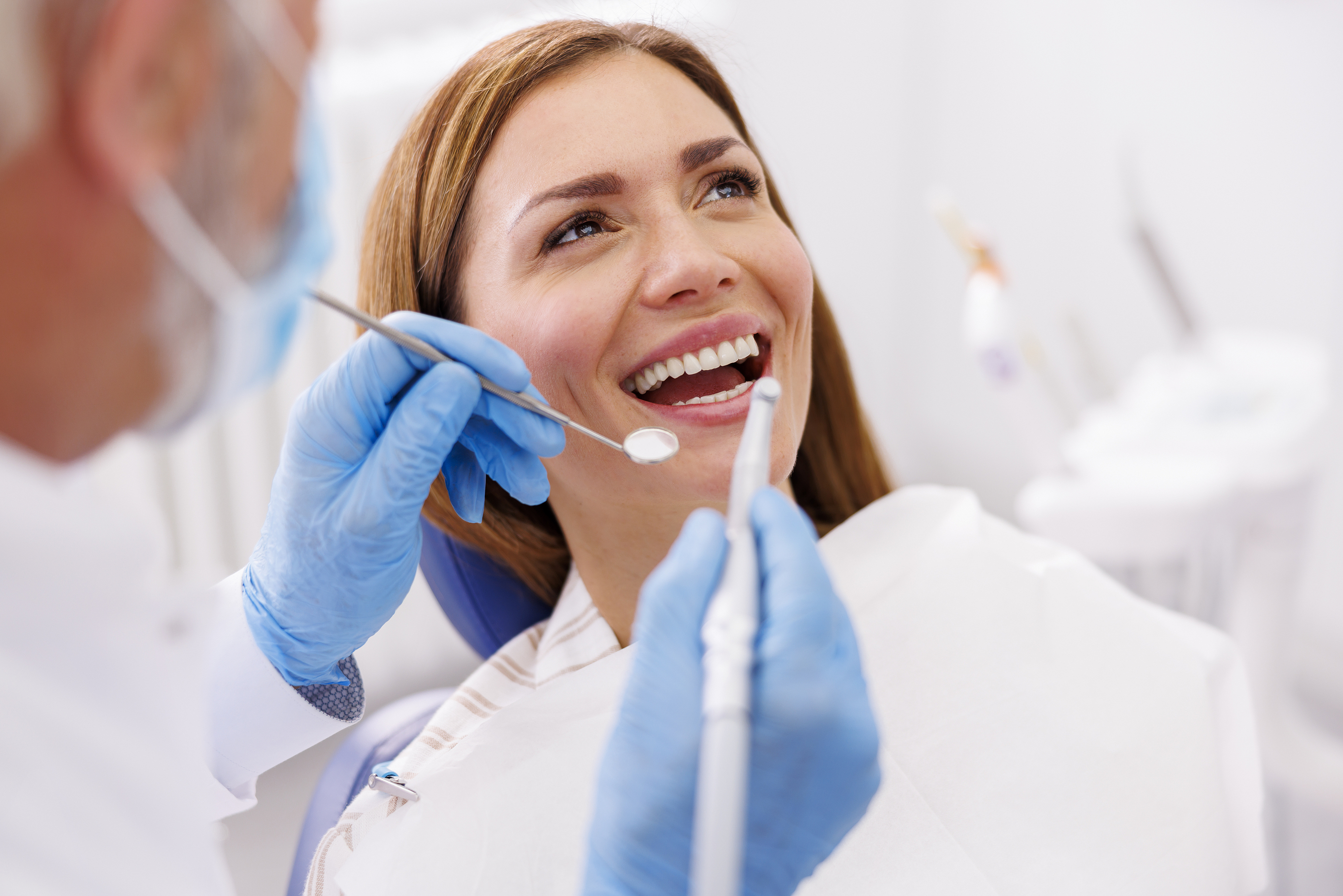After you’ve received dental care from us, it’s important to follow all postoperative instructions. The sections below will provide post-op instructions for several different procedures. If you have any questions, please do not hesitate to call our office at (615) 327-4914 for after-hours care.
Crowns and Bridges
Refrain from eating for at least 2 hours and/or until the anesthesia has worn off.
Temporary
A temporary is a crown or bridge that is placed on the prepared teeth while the final restoration is made. The temporary serves a very important purpose: It protects the exposed dentin so it won’t be overly sensitive, prevents food and bacteria from collecting on the prepared teeth, and prevents the tooth from shifting or moving, which can make seating of the final restoration more difficult.
The temporary is placed with lightweight cement that is designed to come off easily. Avoid chewing sticky foods such as gum, caramels, etc.
Use your toothbrush to clean the temporary as you normally do your natural teeth. However, when flossing, it is best to pull the floss through the contact rather than lift up on the temporary so you don’t accidentally loosen it. If your temporary comes off between appointments, slip it back on and call our office so that we can re-cement it for you. A little denture adhesive placed inside the crown can help to hold it in place in the interim.
Sensitivity
Sensitivity, especially to cold, is common briefly following treatment. For the first few days, avoid extremely hot or cold foods and beverages. It is normal to have discomfort in the gums around the tooth after the anesthesia wears off. If your gums are tender, rinse with warm salt water, dissolving half a teaspoon of salt in an 8 oz. glass of warm water. An analgesic such as acetaminophen (Tylenol) or ibuprofen (Advil) can help to decrease your discomfort.
Final Crown or Bridge
After the final cementing of your restoration, it may take a few days for you to get used to the new crown or bridge. If your bite feels unbalanced, please be sure to call our office for an appointment for a simple adjustment.
Home Care
Although crowns and bridges are often the most durable of all restorations, the underlying tooth is still vulnerable to decay, especially at the interface between the tooth and crown. It is important to resume regular brushing and flossing immediately. Daily home care and regulating your intake of sugar-containing foods will increase the longevity of your new restorations.
Dentures
The following suggestions are presented to assist you in learning to use and properly care for your new dentures. If you have had teeth removed in conjunction with the placement of new dentures, you may also refer to Postoperative Instructions for Extractions.
Breaking-In Period
Most new dentures require a breaking-in period before they become comfortable. This length of time varies with each individual patient depending upon their ability, determination, and perseverance to learn how to use them. You must first learn to keep the dentures in place, and then gradually start to use them.
What to Expect
It is normal for you to feel awkward at first with your new dentures. Your appearance has probably undergone a slight change, your speech may seem altered, and you may feel that your mouth is too full. Time, patience, and some training will soon bring about a relaxation of the facial muscles and begin to alleviate some of the apparent problems.
Looseness
If you have had teeth removed immediately prior to placement of the denture, it may feel loose, due mainly to the gum shrinkage that occurs as the gums heal. Complete healing of the gums and the underlying bone takes three to six months. During this period a temporary liner may be placed inside the denture to keep it relatively snug. Denture adhesives will also help in this regard. Once healing is complete, a permanent liner will be placed, and simply closing your teeth together and swallowing will help to seat the dentures by removing air and saliva from the interface..
Sore Spots
Soreness from uneven pressure on the gums may develop at any time, and is not unusual, especially if you have not worn a denture before. Sore spots are best corrected if the dentures are worn at least three to six hours before returning to the office for an adjustment appointment. This can allow a precise detection of the offending areas inside the denture, which are corrected by trimming.
Eating
Start with eating soft foods or those that are easy to chew. Take small bites and chew slowly while you focus on overcoming difficulties as they arise. Keep the food distributed evenly on both sides and chew on the back teeth. To bite foods that normally require the front teeth, such as apples or corn on the cob, apply pressure backward against the front when closing. If the denture begins to dislodge, biting with the side teeth may be an easier alternative. More difficult foods such as steak and carrots will require a gradual learning curve. Initially, it is recommended that you avoid chewing gum as well as sticky or chewy foods.
Speaking
Learning to talk with your new dentures in place requires some patience and perseverance. Reading aloud is a very good way to learn to enunciate distinctly, especially those sounds or words that are not clear. Try to avoid those movements of the lips and tongue that tend to displace the dentures or cause them to click. Careful practice and repetition may help to hasten the process and produce a return to your normal, confident speech.
Mouth and Denture Hygiene
It is extremely important to clean your dentures with a soft brush and a cleaning paste, or soapy water, after each meal. Food particles that are trapped under the denture can cause inflammation of the gums and sore spots. You should remove your dentures for at least six hours daily, usually when going to bed at night, to give your gum tissues a rest. During this time, the dentures can be cleansed and placed in a small tub of water to prevent them from drying out, which can cause the dentures to distort and not fit well. At least once a week, place them in an enzymatic or special cleaning solution to remove those otherwise insoluble stains and proteins. Because foods will stick to the soft tissues of your mouth, it is also beneficial to brush the roof of your mouth and your tongue daily. Massaging and stimulating these tissues will reduce the incidence of inflammation and sore spots.
If your dentures were placed over new extraction sites (immediate dentures), you may wear the dentures at night for the first 3 days. This will help to promote clotting and prevent irritations to those areas. You may then resume the directions previously described and remove the dentures when sleeping.
Be sure to have your dentures checked at least once annually as changes in the mouth, such as bone loss, and a wearing of the teeth will inevitably occur. Careful maintenance of the dentures and the supporting soft tissues will help to slow down these changes.
Extractions
Refrain from eating and chewing for at least two hours and until the anesthesia and numbness has worn off.
The initial healing period usually takes one to two weeks, and you’ll likely experience some swelling for the first 48 hours.
Some discomfort after the extraction is normal.
Be sure to take any antibiotic medication prescribed for you as it will help the area to heal. An analgesic may also be recommended for your comfort and can be taken as directed.
To avoid nausea, do not take pain medication on an empty stomach. You can also decrease pain and swelling by applying an ice pack 20 minutes on, 20 minutes off, for the first six hours following the tooth extraction(s).
A blood clot will form on the extraction site, and this clot is vital to the healing process. To keep the clot intact, avoid touching the extraction site with your tongue or fingers, do not drink liquids through a straw, and do not spit or swish vigorously. Blowing your nose or sneezing violently can also dislodge the blood clot and impair healing, so if you have an upper respiratory infection or suffer from allergies, be sure to have the appropriate sinus medication on hand.
Do not rinse your mouth the day of the surgery. Smoking, or allowing food particles to pack into the tooth’s socket, should be avoided, as both will significantly affect the healing process.
Twenty-four hours following the procedure, you can rinse gently with mouthwash or a warm saltwater solution. Rinse by dissolving one teaspoon of salt with one cup of warm water. Gently swish the solution around the affected area, and spit carefully. You should do this two to three times each day for the week following the extraction.
Relax as much as possible and avoid all strenuous activities for the first 24 hours following surgery. Once the numbness has worn off, you should eat, as nourishment is important to the healing process. Limit your diet to soft foods like yogurt, soft soups, ice cream, or soft-cooked eggs for the first 48 hours, and drink at least eight large glasses of water or fruit juice each day.
Keep your head elevated with pillows to control bleeding. We will give you a supply of gauze sponges to place over the bleeding area.
Change the pad as necessary, and use them until the bleeding stops completely. You can also bite gently but firmly on a moist tea bag for 20 minutes. Be sure to call our office if bleeding persists or increases.
The space left by the tooth will feel a bit strange to you at first. Eventually, new bone and gum tissue will grow into the gap left by the extraction.
Fillings
Refrain from eating for at least two hours or until the anesthesia has worn off.
Sensitivity
Sensitivity, especially to cold, is common for a time following treatment. For the first few days avoid extremely hot or cold foods and beverages. It is normal to have discomfort in the gums around the tooth after the anesthesia wears off. If your gums are tender, rinse with warm salt water by dissolving half a teaspoon of salt in an 8 oz. glass of warm water. An analgesic such as acetaminophen (Tylenol) or ibuprofen (Advil) will help to decrease discomfort.
The New Filling
After the placement of your new restoration, it may take a few days to get used to it. If your bite feels unbalanced, please be sure to call our office for an appointment for a simple adjustment.
Home Care
Although the treatment that was performed is quite durable, the underlying tooth is still vulnerable to decay, especially at the interface between the tooth and filling. It is important to resume regular brushing and flossing immediately. Daily home care and regulating your intake of sugar-containing foods will increase the longevity of your new restoration.
Gum Surgery
Refrain from eating for at least two hours or until the anesthesia has worn off.
Diet
Do not eat for about three hours following the surgery. Then, a soft or liquid diet, including warm soup or instant breakfast, is advised for the next two to three days. Avoid alcohol, carbonated drinks, and hard, brittle foods such as tortilla chips that can injure the surgical site. Drinking plenty of fluids and eating a well-balanced diet are important to your recovery.
Medications
Moderate discomfort may begin as the anesthesia wears off. A non-aspirin analgesic may be recommended to relieve any tenderness or discomfort and may be taken within the first hour after surgery. It is important to take the prescribed antibiotic as it will aid in the healing process. If you have a reaction to a medication such as nausea or skin rash, stop taking it immediately and call our office.
Bleeding Control
Slight bleeding or oozing after the surgery is normal and may occur at intervals for the first 24 to 48 hours. Forceful rinsing or excessive spitting can disrupt clotting, so do not rinse for at least four hours. If bleeding persists, apply a moistened gauze pad, or tea bag, with moderate pressure to the bleeding site for 20 minutes. Repeat if necessary. Stay calm and quiet; lie down with the head elevated on two to three pillows. If the bleeding persists, do not hesitate to call our office.
Swelling
Slight swelling is a common response in the healing process. To minimize excessive swelling, place an ice bag or a cold, moist compress over the involved site for 10 to 20 minute intervals. Repeat this several times as needed over the next 48 hours. If the swelling increases or discomfort develops, call our office.
Oral Hygiene
It is extremely important to keep your teeth and gums clean following surgery. Not only will this help to achieve a better result, but the tissues will heal faster. Brush your teeth very lightly the first night. Then begin flossing the next day, allowing the floss to very gently touch the gums of the surgical area. Do not force the floss vigorously between the tooth and the gums as this will prevent the new attachment from developing normally. Also, refrain from using any irrigation devices such as the Water Pik. After brushing and flossing, apply chlorhexidine gluconate (Peridex), if prescribed, with a cotton swab first by dabbing the area lightly, and then gently swishing a capful in the mouth for 30 seconds. Avoid using any strong mouthwashes that contain alcohol. Chloraseptic and Cepastat may be used.
No Smoking
Do not smoke for at least 48 hours. Smoking can seriously delay the healing process. If you have any questions or problems, please call our office.
Porcelain Veneers
Do not eat for at least two hours or until the anesthesia has worn off.
Temporary
Temporaries are acrylic or composite veneers that are placed on the prepared teeth for protection during the time the porcelain veneers are constructed in the lab. A temporary serves several important purposes: it protects the exposed dentin to minimize sensitivity, prevents the tooth from shifting, and last but not least, restores tooth contour and appearance. The temporary is placed with cement that is designed to come off easily, so avoid chewing sticky foods such as gum or taffy. Use your toothbrush to clean the temporary as you normally do your natural teeth. You may also floss or, if there is more than one veneer and the temporaries are fused, you may need a floss threader. To avoid loosening the temporary, it is best to pull the floss through the contact rather than pulling it down through the contact. If your temporary comes off between appointments, slip it back on and call our office so that we can re-cement it for you. A small amount of denture adhesive placed inside the veneer can help to hold it in place in the interim.
Sensitivity
Sensitivity, especially to cold temperatures, is common for a period of time following treatment. For the first few days avoid extremely hot or cold foods and beverages. If your gums were re-contoured during treatment, they may be tender after the anesthesia wears off. Rinsing with warm salt water by dissolving a half teaspoon of salt in 8 oz. of warm water will help. An analgesic such as acetaminophen (Tylenol) or ibuprofen (Advil) will also increase your level of comfort.
Your New Smile
After the cementation of your porcelain veneers, it may take a few days to get used to the new veneers. Your bite and the way your teeth come together may feel different, especially if we changed the length, shape and/or thickness of your teeth. If your bite feels unbalanced, please be sure to call our office for an appointment to make an adjustment.
Home Care
To maintain the veneers and your new smile, it is important to remember that the underlying teeth are still vulnerable to decay, especially at the gumline where the tooth and veneer meet. It is important to resume regular brushing and flossing immediately. Daily home care and regulating your intake of sugar-containing foods will increase the longevity of your new restorations.
Root Canal
Refrain from eating for at least 2 hours or until the anesthesia has worn off to prevent possible injury to your lips and cheeks. This time interval will also allow the temporary filling to set to a reasonable hardness. We expect your tooth to be sore with chewing and biting pressure, so you should avoid very hard or chewy foods. This should gradually decrease within 7 to 10 days after treatment.
Be sure to take any antibiotic medication prescribed for you as it will help the area to heal. An analgesic may also be recommended for your comfort and can be taken as directed.
If you have any of the following signs or symptoms, please call our office as these complications do not occur routinely:
- A reaction to the prescribed medication
- Increasing tenderness or swelling in the area surrounding the tooth
- The temporary filling is dislodged from the tooth
- The tooth fractures
Scaling and Root Planing
Scaling and root planing therapy is a procedure that involves removing bacterial plaque and tartar from the root surface below the gum line with instruments and ultrasonics. It may also require removal of diseased tissue within the pocket with a laser. The goal of this treatment is to allow reattachment of the gums to the clean root surface and to shrink the periodontal pockets to levels that can be maintained by daily flossing and brushing. The following guidelines have been prepared for you in order to maximize healing and minimize any discomfort.
Refrain from eating for at least two hours or until the anesthesia has worn off.
Things to Avoid for the First 24 Hours
- Vigorous physical exercise, but you may return to work
- Drinking through a straw or sucking motions
- Smoking. (It’s better to refrain for 48 hours.)
- Drinking alcoholic beverages, as this will hinder the healing process
- Foods that are extreme in temperature or spice
- Strong mouthwashes that contain alcohol
Things to Do
- You may take a non-aspirin analgesic to relieve any tenderness or discomfort, such as ibuprofen (Advil) or acetaminophen (Tylenol).
- Eat a well-balanced soft diet. You may chew on the opposite side of the treated area until it is comfortable to chew normally.
- Rinse with a warm salt water rinse, a teaspoonful in an 8 oz. glass of water, three times a day.
- Brush your teeth very lightly in the treated area the first night. Then begin flossing lightly as well the next day, gradually increasing to normal force by the week’s end.
- After flossing and brushing, rinse with chlorhexidine gluconate (Peridex), if prescribed, for at least 60 seconds. Do this at least twice daily. Chloraseptic and Cepastat are recommended mouthwashes.
- Several days after treatment, your gums should begin to appear pinker, less swollen, and will bleed less when you floss. These are signs of healing and improving periodontal health. If you have any questions or problems, please call our office.

